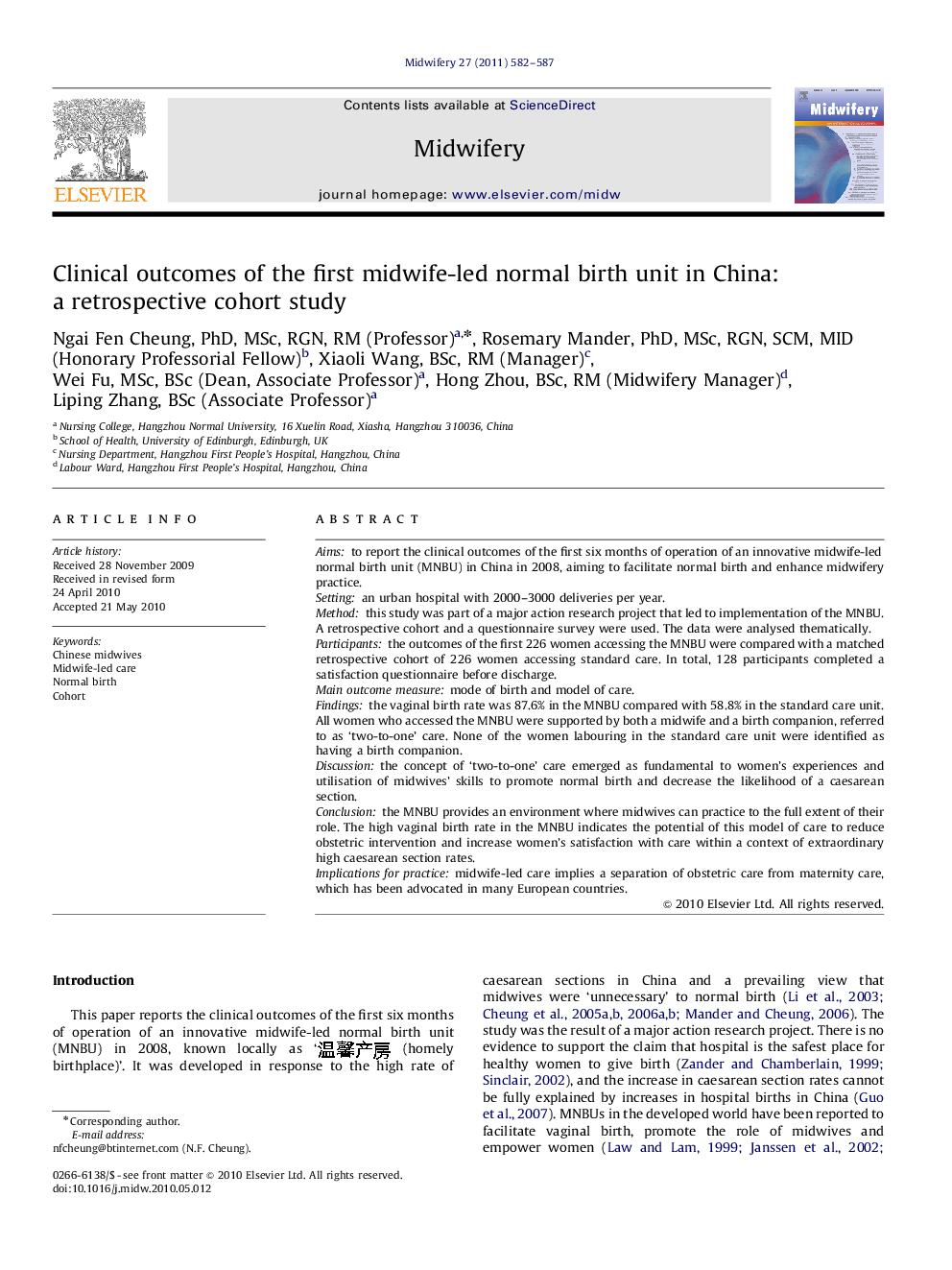| Article ID | Journal | Published Year | Pages | File Type |
|---|---|---|---|---|
| 1084667 | Midwifery | 2011 | 6 Pages |
Aimsto report the clinical outcomes of the first six months of operation of an innovative midwife-led normal birth unit (MNBU) in China in 2008, aiming to facilitate normal birth and enhance midwifery practice.Settingan urban hospital with 2000–3000 deliveries per year.Methodthis study was part of a major action research project that led to implementation of the MNBU. A retrospective cohort and a questionnaire survey were used. The data were analysed thematically.Participantsthe outcomes of the first 226 women accessing the MNBU were compared with a matched retrospective cohort of 226 women accessing standard care. In total, 128 participants completed a satisfaction questionnaire before discharge.Main outcome measuremode of birth and model of care.Findingsthe vaginal birth rate was 87.6% in the MNBU compared with 58.8% in the standard care unit. All women who accessed the MNBU were supported by both a midwife and a birth companion, referred to as ‘two-to-one’ care. None of the women labouring in the standard care unit were identified as having a birth companion.Discussionthe concept of ‘two-to-one’ care emerged as fundamental to women’s experiences and utilisation of midwives’ skills to promote normal birth and decrease the likelihood of a caesarean section.Conclusionthe MNBU provides an environment where midwives can practice to the full extent of their role. The high vaginal birth rate in the MNBU indicates the potential of this model of care to reduce obstetric intervention and increase women’s satisfaction with care within a context of extraordinary high caesarean section rates.Implications for practicemidwife-led care implies a separation of obstetric care from maternity care, which has been advocated in many European countries.
